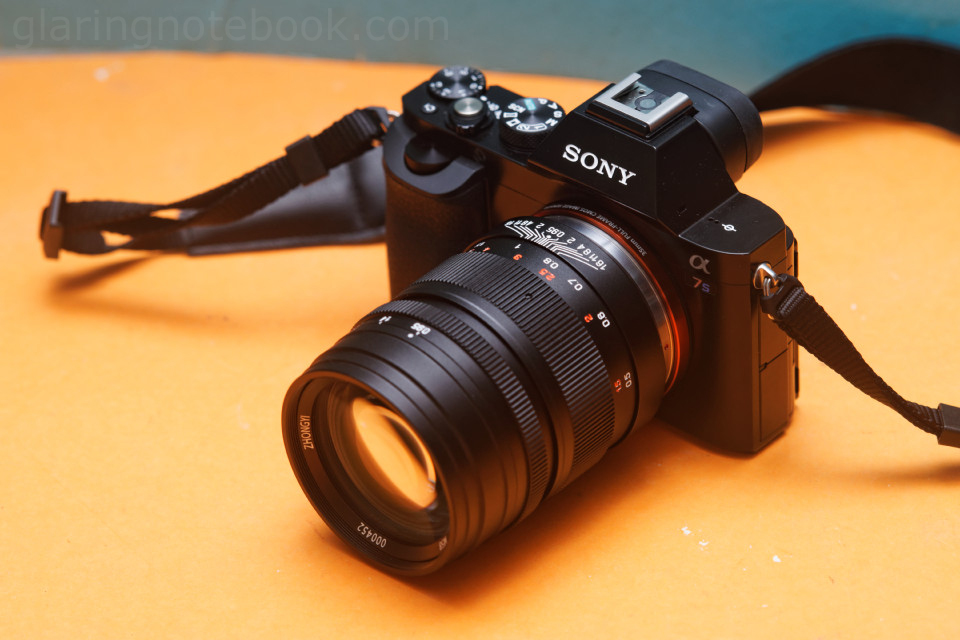
4th August 2014: I finally doubled my E-mount body count, by adding the Sony Alpha 7S! I skipped the Alpha 7 because it was merely 24 megapixels – something I’ve had in 3 bodies since 2008 – the Sony Alpha 900, Alpha 77V and Alpha 99V. I also skipped the Alpha 7R because although it had a tempting 36 megapixels, it was missing Electronic First Curtain, important on a full-time live-view camera, because it adds to shutter lag drastically especially when using flash.
The Alpha 7S solved that by not only having Electronic First Curtain, but Electronic Second Curtain (Silent Shutter)! So it is truly silent – some other cameras may claim to have a softer shutter or silent shutter, but you can still hear it. Not this. There is no physical shutter moving when Silent Shutter is enabled. The only sound you’ll hear is if you are shooting an A-mount lens not at its wide open aperture – then you’ll hear the aperture closing down for the picture.
Silent Shutter does have its artifacts though, in the form of stripes when shooting in flourescent light, and one way to solve this is to set your shutter speed to match the frequency of the alternating current e.g. 1/50s or 1/60s depending on where you are. You can’t use Silent Shutter with flash, and because it is not a global shutter, it scans the frame from top to bottom, meaning if you shoot out a car window, you may get scenery that drags across the frame diagonally.
The Alpha 7S also does amazingly at low light. I’ve set Auto ISO to max out at ISO 409600, letting the camera decide when it needs to go that far. Strangely, that hasn’t happened much, even though I’m now on Manual Exposure, 1/160s and shooting whichever lens wide open for the foreground/background separation.
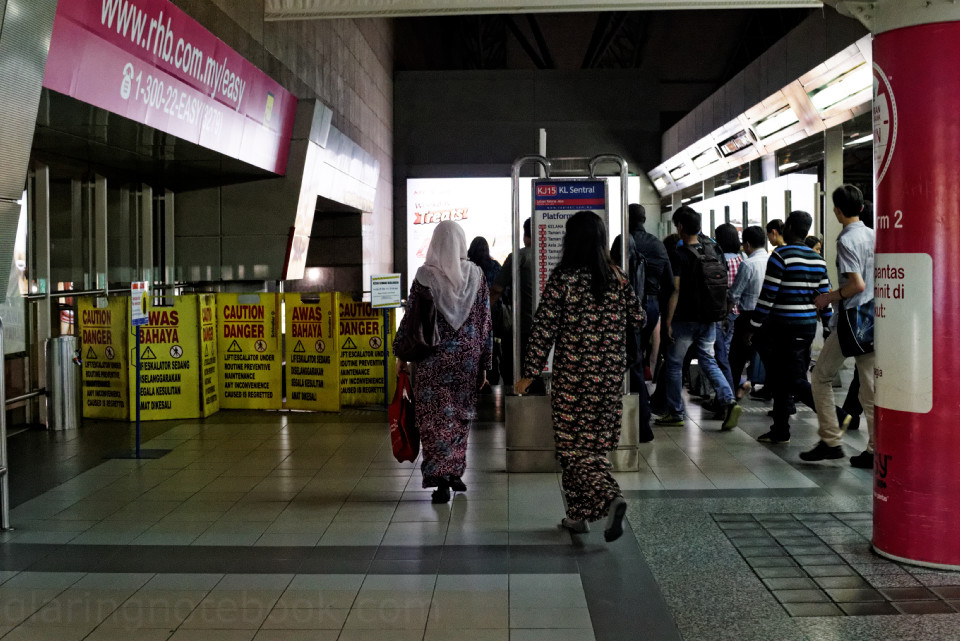
Here, though, is 1/160s ISO20000 at F5.6. I don’t have to worry about shallow depth of field in street photos!
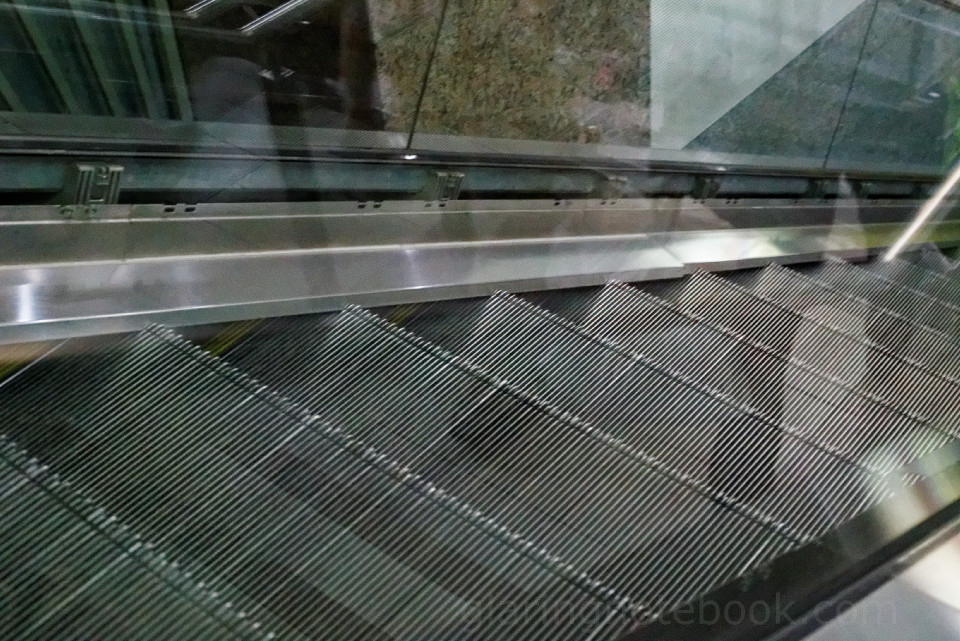
Auto ISO chose ISO80000.
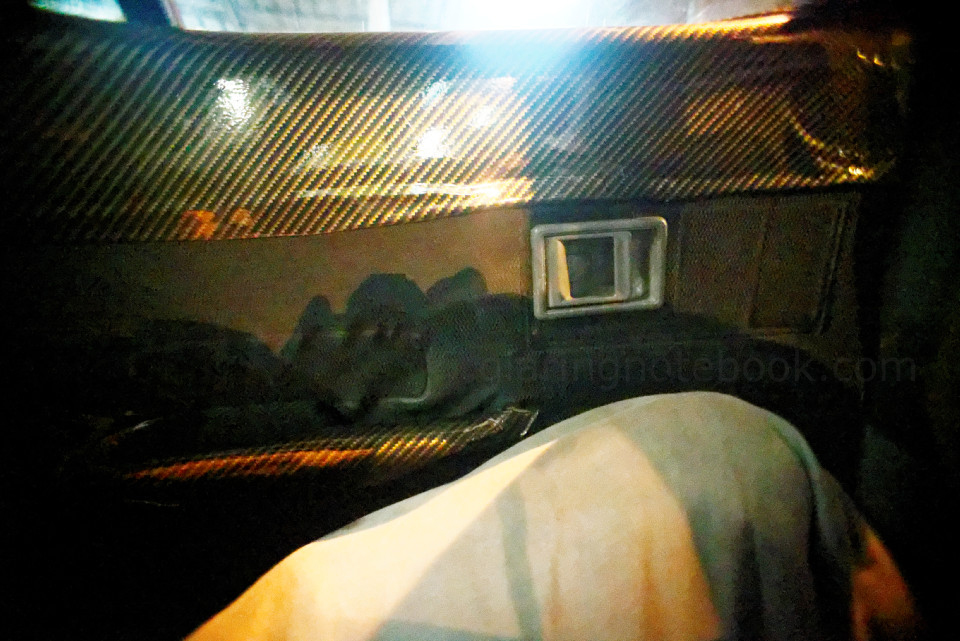
F2.8 1/100s. Auto ISO chose ISO128000. I’m hoping to get in a taxi with the classic flowery wallpaper patterns of my childhood taxis.
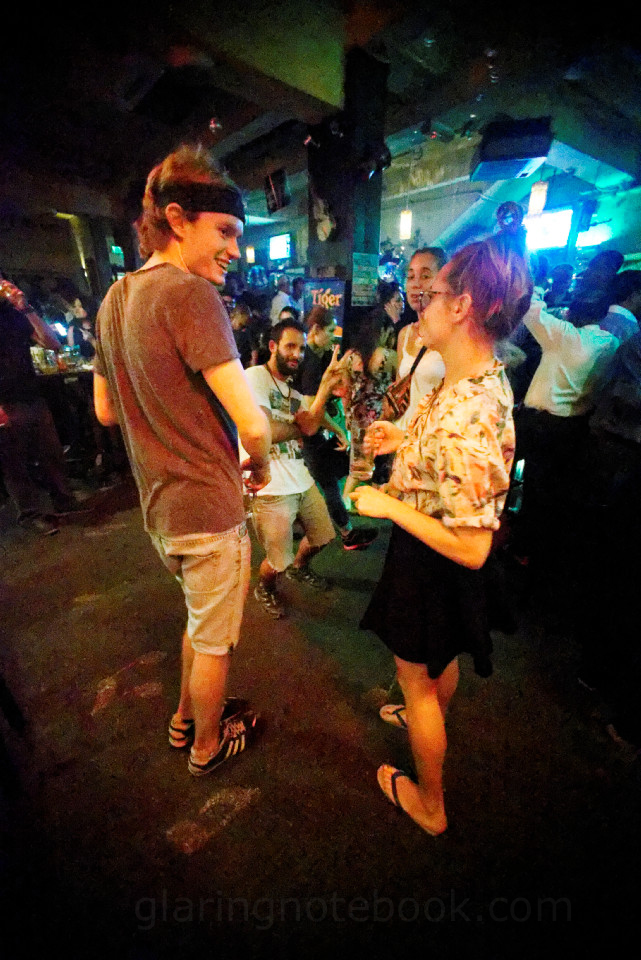
F2.8 1/125s. Auto ISO chose ISO204800. Yup, frozen people on the dance floor.
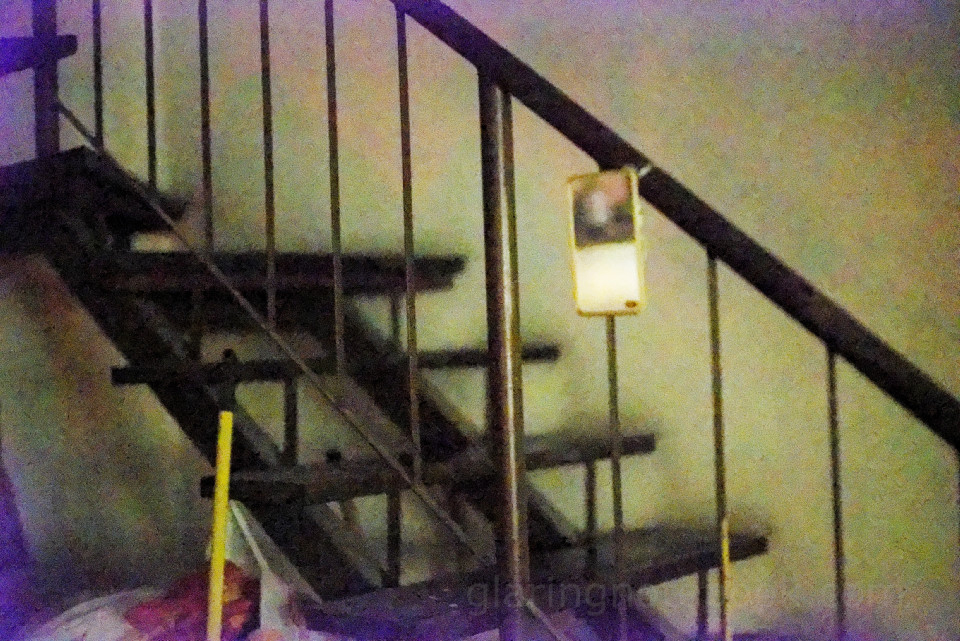
1/15s. Auto ISO chose ISO409600. I turned off all the lights. It was nighttime, and I could not see anything. I turned on the camera, and I was surprised to see it seeing in the dark. It had night vision!
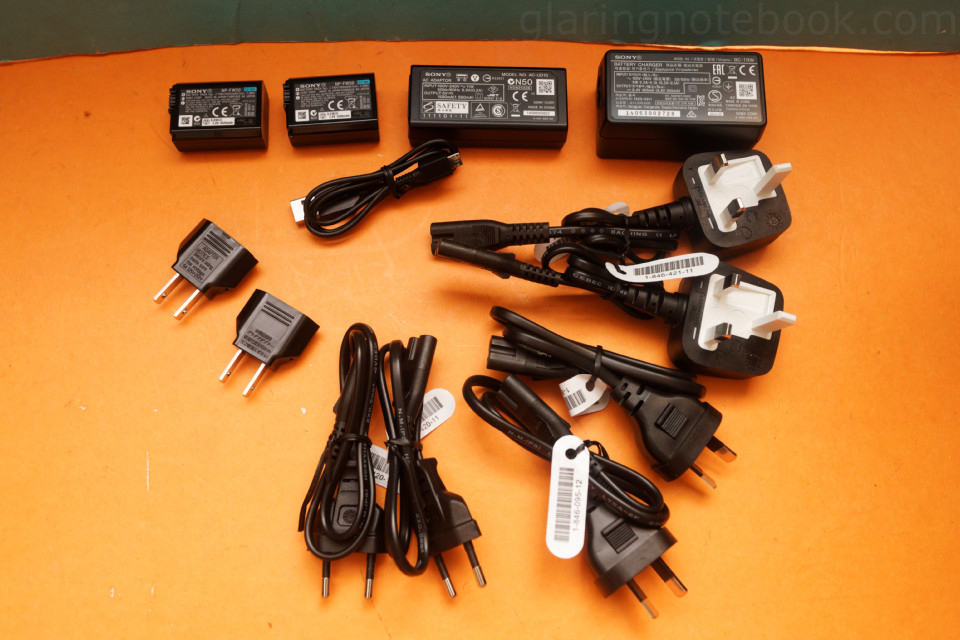
The stuff that came in the box. Lots of cables, and the battery charger!
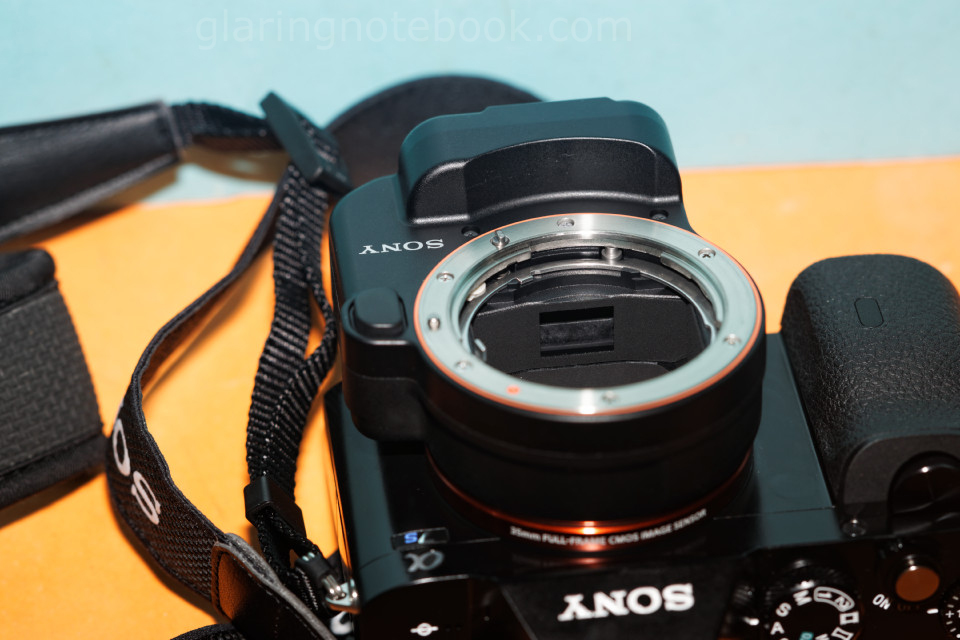
I also bought the Sony LA-EA4 A-mount to E-mount adapter. This is the fourth such adapter; what’s the difference?
LA-EA1 – APS-C only, no translucent mirror, contrast-detect autofocus with SSM and SAM lenses, manual focus with screw-drive lenses
LA-EA2 – APS-C only, translucent mirror, phase-detect autofocus with SSM lenses, SAM lenses and screw-drive lenses
LA-EA3 – full-frame, no translucent mirror, contrast-detect autofocus with SSM and SAM lenses, manual focus with screw-drive lenses
LA-EA4 – full-frame, translucent mirror, phase-detect autofocus with SSM lenses, SAM lenses and screw-drive lenses
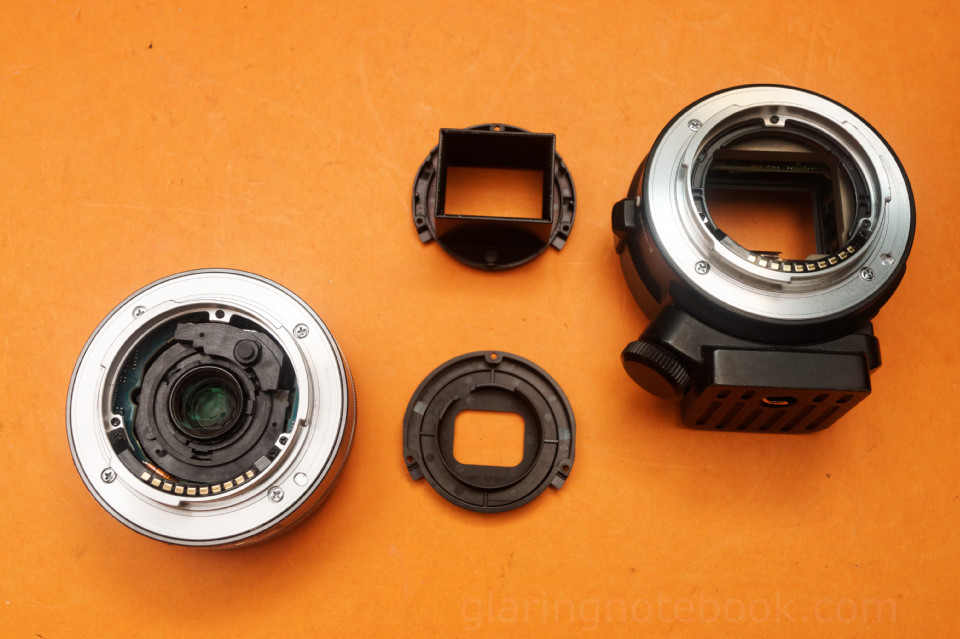
I also removed the rear baffle from my Sony E 16mm F2.8 pancake lens (left) and Sony LA-EA1 (right), making both full-frame compatible.

However, the 16mm has a bit of vignetting left, and distortion beyond the APS-C frame is weird, but it’s not too bad – it can look rather interesting!

If I wanted a proper wide-angle, I still have my Sony Carl Zeiss Distagon T* 24mm F2.0 ZA SSM (on the right, on the LA-EA4, on the Alpha 7S). The Sony Alpha NEX-5 is on the left. Both these setups give the same angle of view.
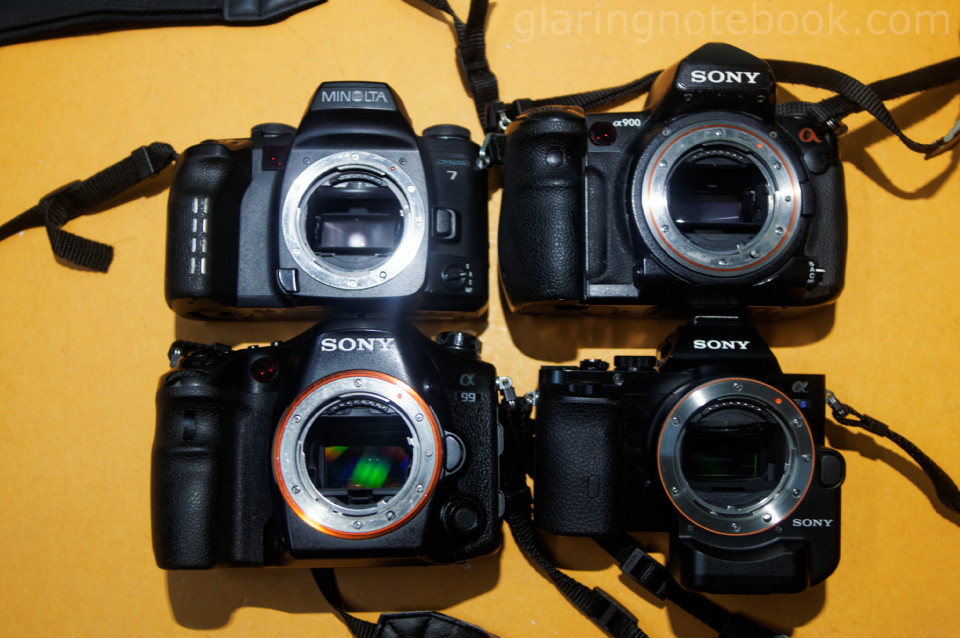
Here’s a full full-frame family picture. Clockwise from top-left: Minolta Dynax 7, Sony Alpha 900, Sony Alpha 7S with LA-EA4, Sony Alpha 99V.
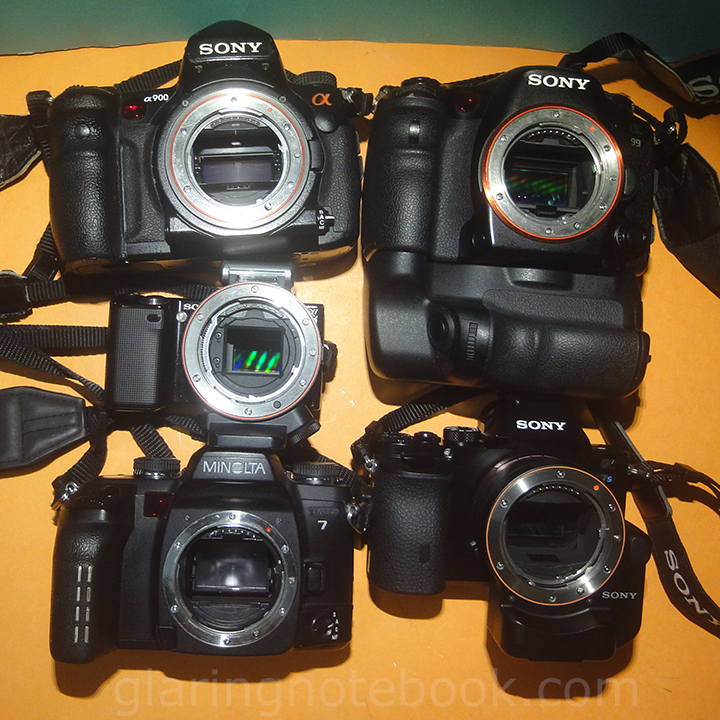
Same as above, but adding the Sony Alpha NEX-5 with LA-EA1 adapter and Sony VG-C99AM to the Alpha 99V.
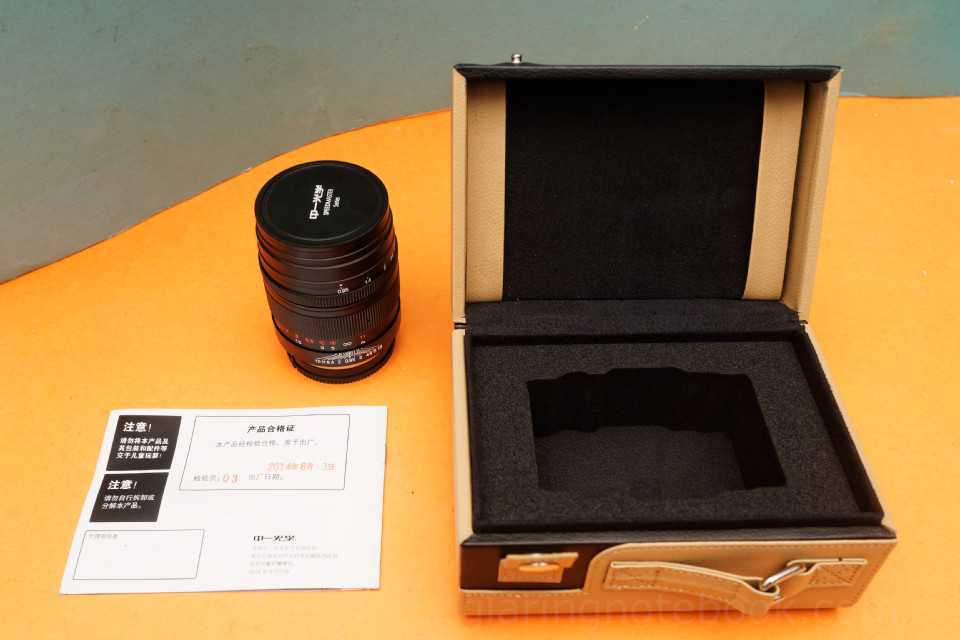
You might have noticed a new lens in the first picture. Yup, the most affordable, high-quality Mitakon/ZhongYi Speedmaster 50mm F0.95! They changed name from Mitakon to ZhongYi. Got this on the 15th of August 2014.

It comes in a very classy looking box.
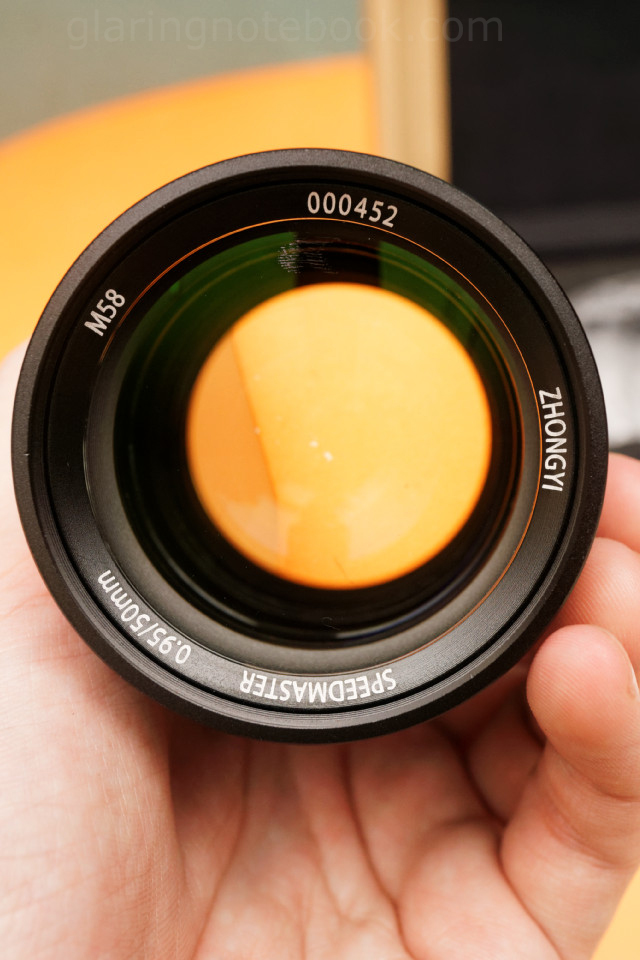
The lens itself is classy, a heavy chunk of metal and glass, with a moderately tight focus ring and a clickless aperture ring, suited for video because it makes no sound. A drawback though is that you may accidentally move away from F0.95 unintentionally!
There is a Pro version coming later, but I was told by the seller that this batch already had the new coating.
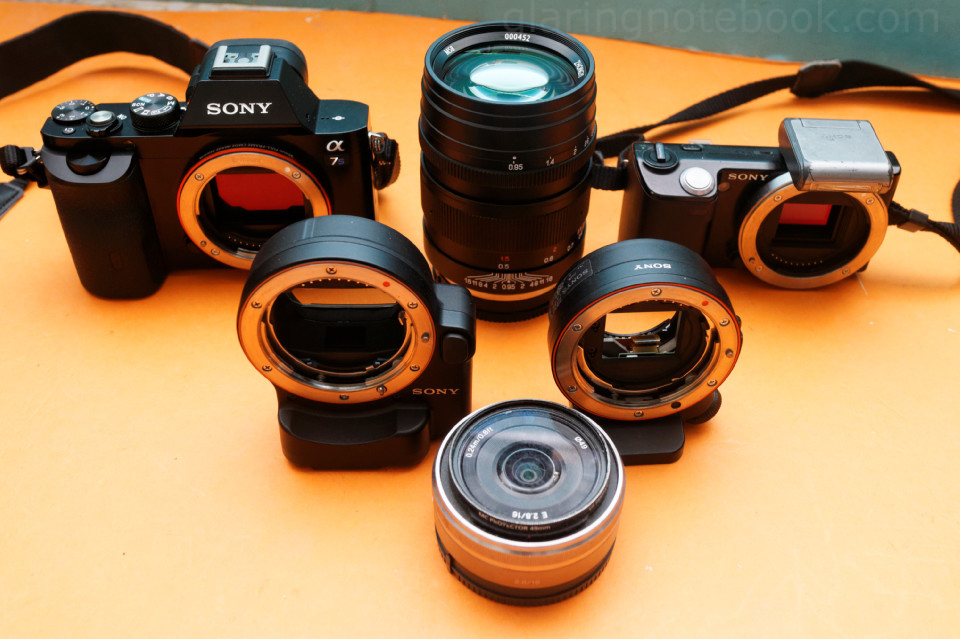
Now, a full E-mount family portrait!
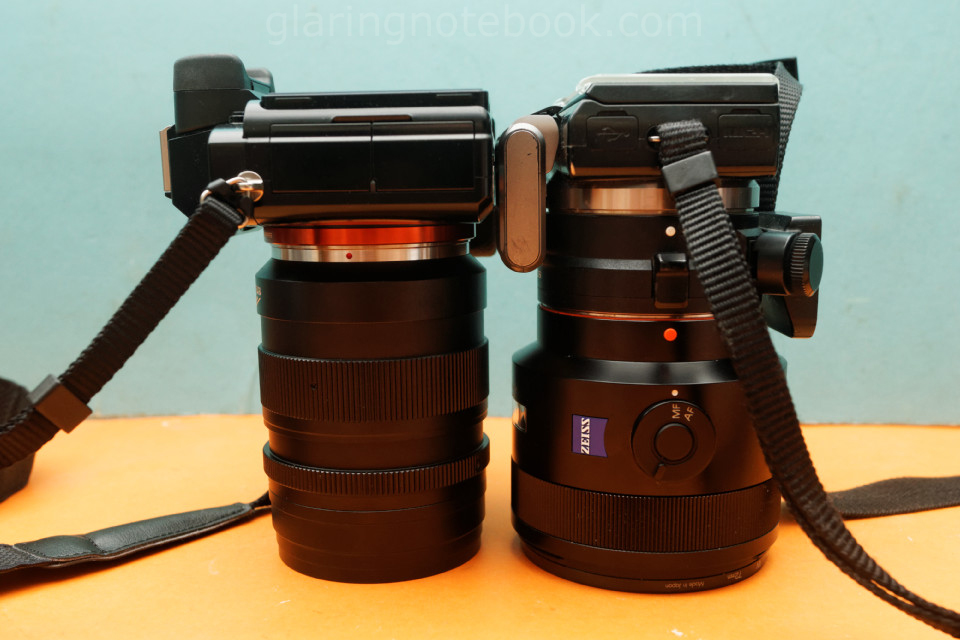
On the right is the Sony Carl Zeiss Planar T* 50mm F1.4 ZA SSM on the LA-EA4 on the Sony Alpha NEX-5. You can see it’s just as long as the Sony Alpha 7S with the Mitakon/ZhongYi Speedmaster 50mm F0.95.
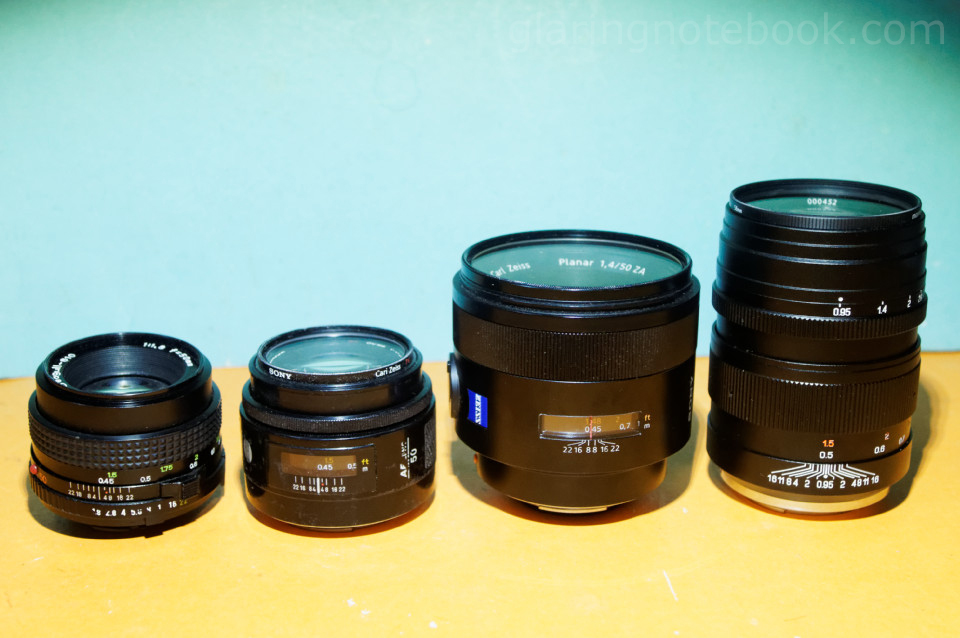
All my mountable 50mm lenses! Left to right: Seagull 50mm F1.8 for Minolta SR mount; Minolta 50mm F1.4 Original; Sony Carl Zeiss Planar T* 50mm F1.4 ZA SSM; Mitakon/ZhongYi Speedmaster 50mm F0.95.
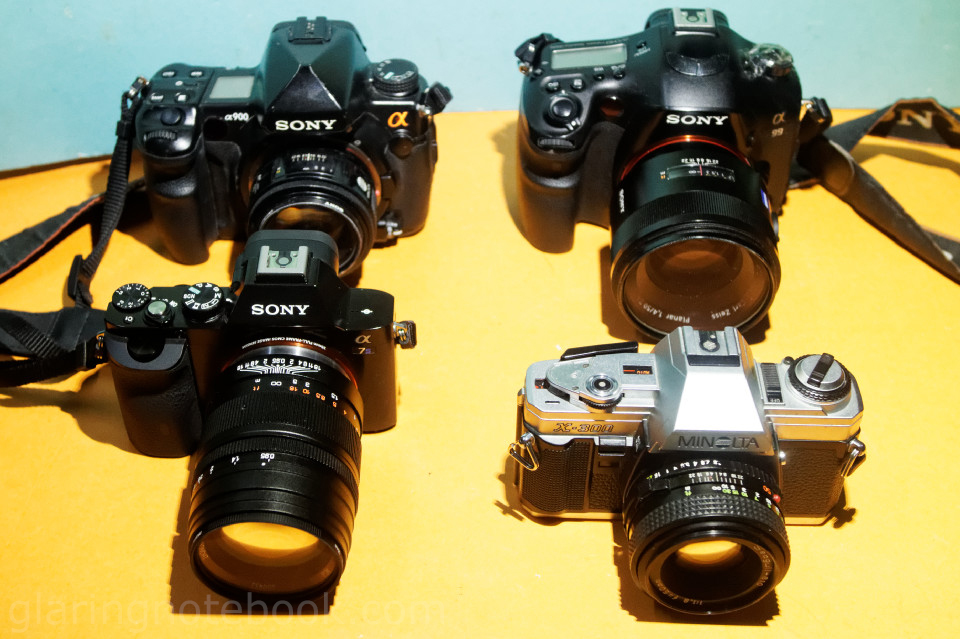
Clockwise from rear left: Sony Alpha 900 with Minolta 50mm F1.4 Original; Sony Alpha 99V with Sony Carl Zeiss Planar T* 50mm F1.4 ZA SSM; Minolta X300 with Seagull 50mm F1.8; Sony Alpha 7S with Mitakon/ZhongYi Speedmaster 50mm F0.95. All having the same angle of view!
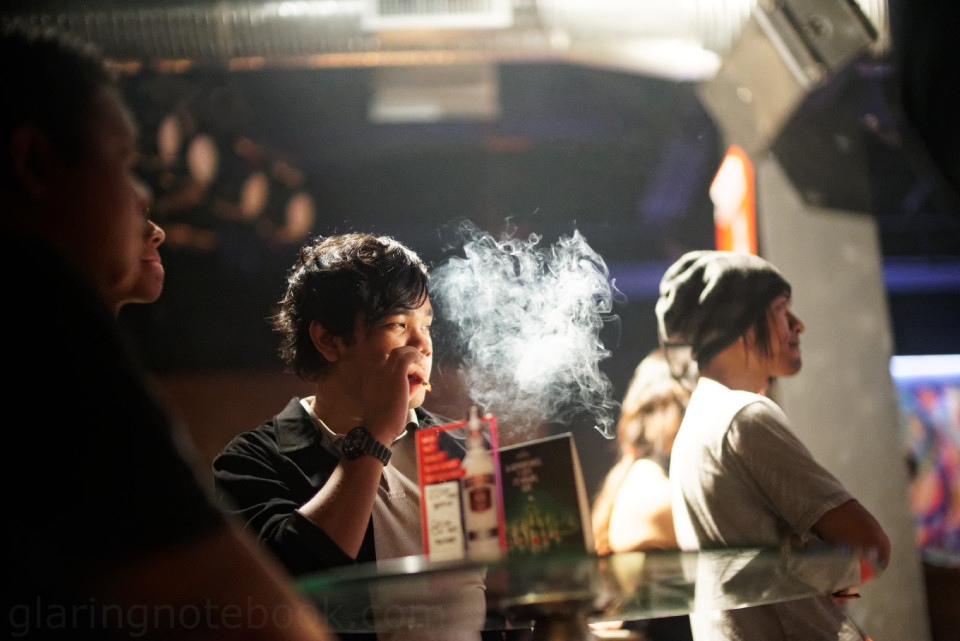
Yup, this kind of angle of view. F0.95, 1/160s, ISO10000, by the only camera setup from above that can do this.
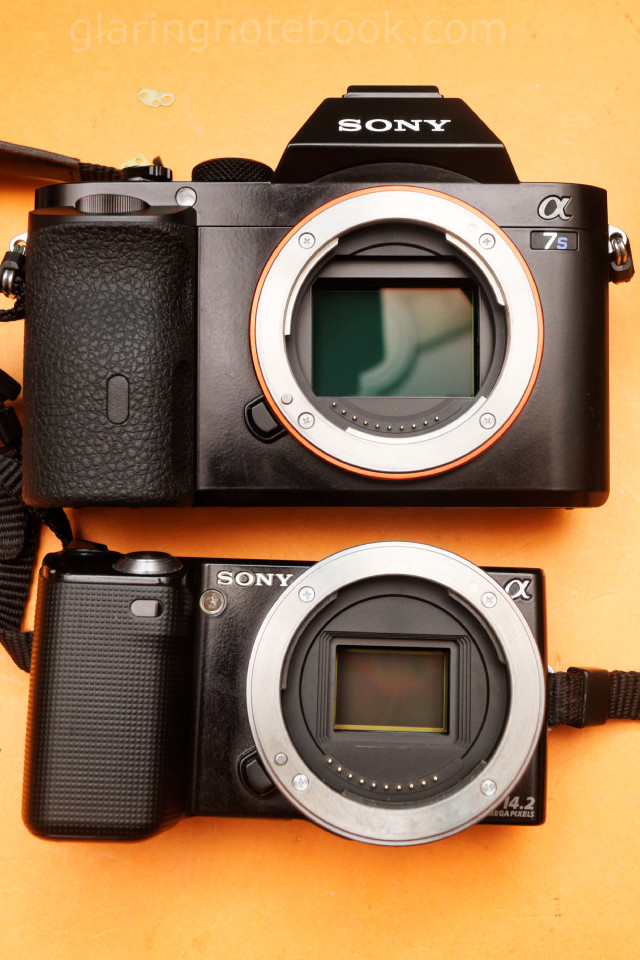
20th August 2014: Oh, and lastly, my Sony Alpha NEX-5 sensor looks a bit different now. Can you guess why?
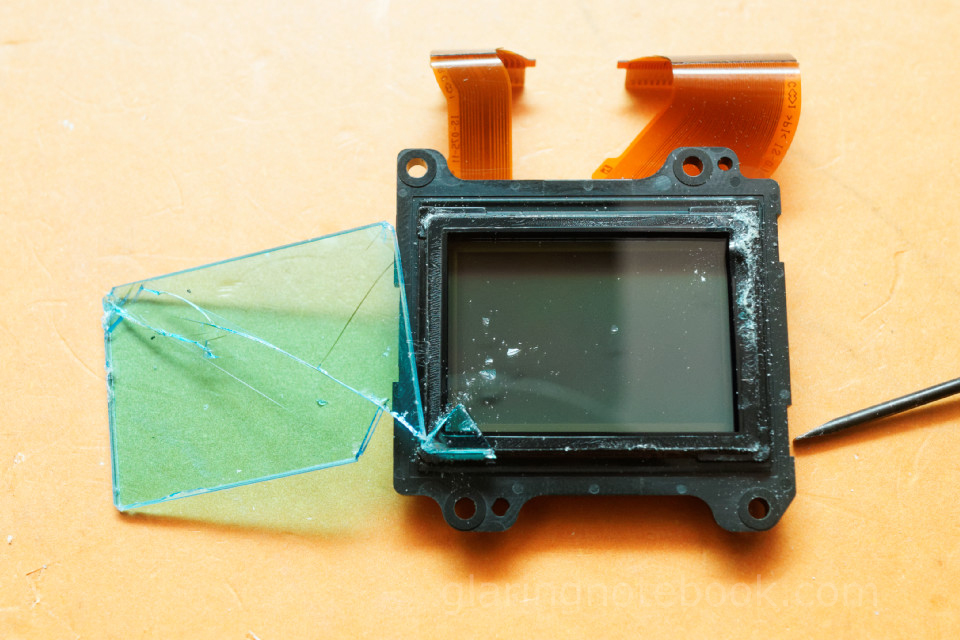
It was out of warranty, so I took it apart, and tore off the infrared blocking filter. Yeah, I didn’t do a good job of it…
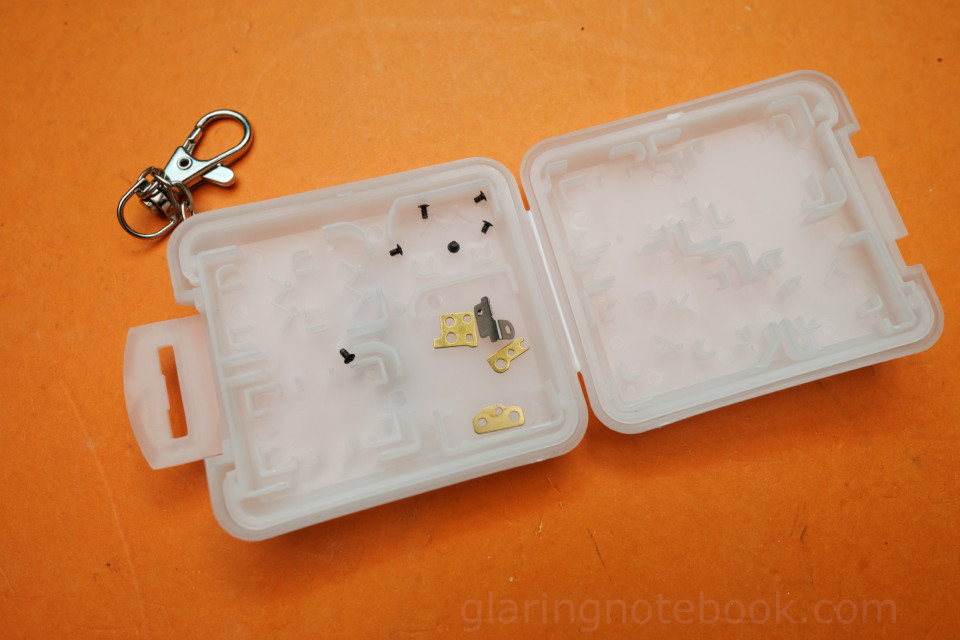
…nor did I assemble it back correctly. These are the leftover parts! I’m told though that the spacers should be removed to keep infinity focus. The excess screws probably were meant to be at the second stage, after removing the outer shell.
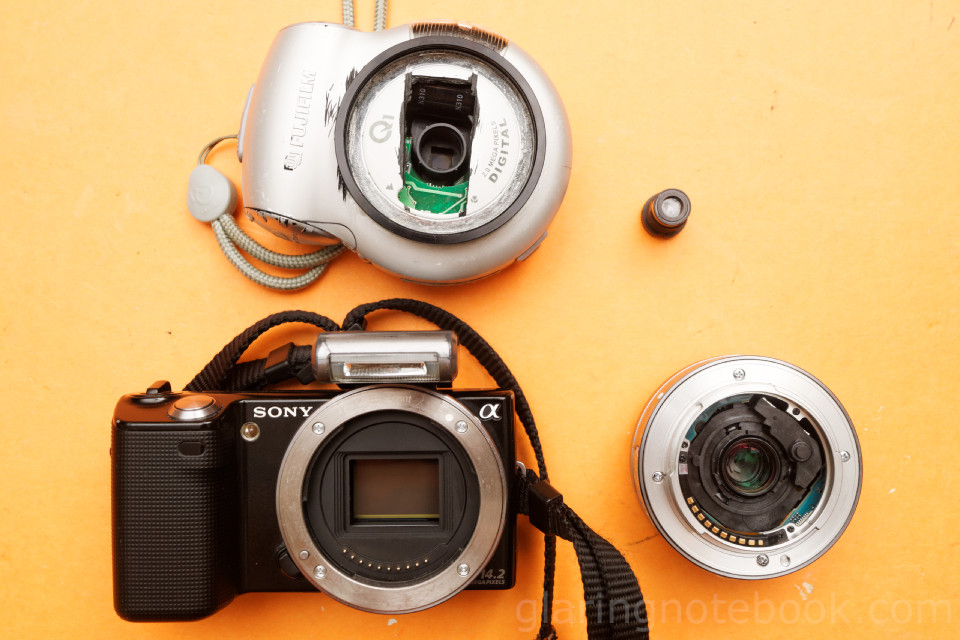
I’ve now doubled my infrared camera count. Above is my infrared-modded manual-focus Fujifilm Digital Q1, with a superglued-on filter thread that allows for SLR lenses to be screwed on by a rear lens cap (with cutout) that has a UV filter superglued on its back – making it a mirrorless interchangeable lens camera way before the Panasonic DMC-G1 debuted. Yes, it could take different mounts, with the right rear lens cap!
The small lens is from a manual-focus webcam; it’s an 8mm F3.5, making for 35mm equivalent on full-frame; thus the crop factor was 4.375x.
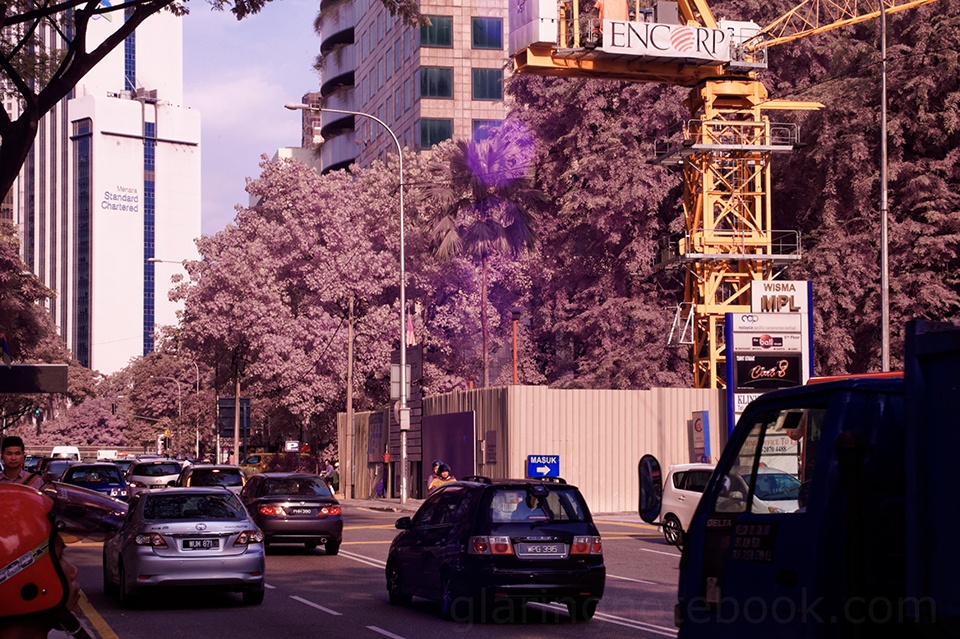
So how is the Mitakon/ZhongYi Speedmaster 50mm F0.95 on infrared? It has a visible hotspot on the middle.

Can get rather hazy.
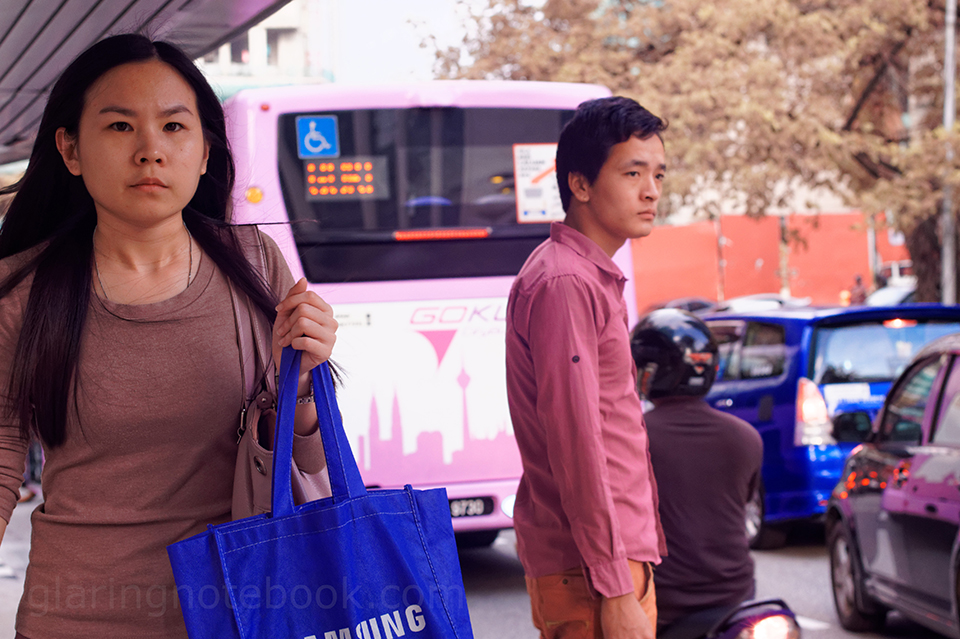
These were all mixed color shots – I didn’t think of bringing a filter that blocks visible light and allows infrared only to pass.
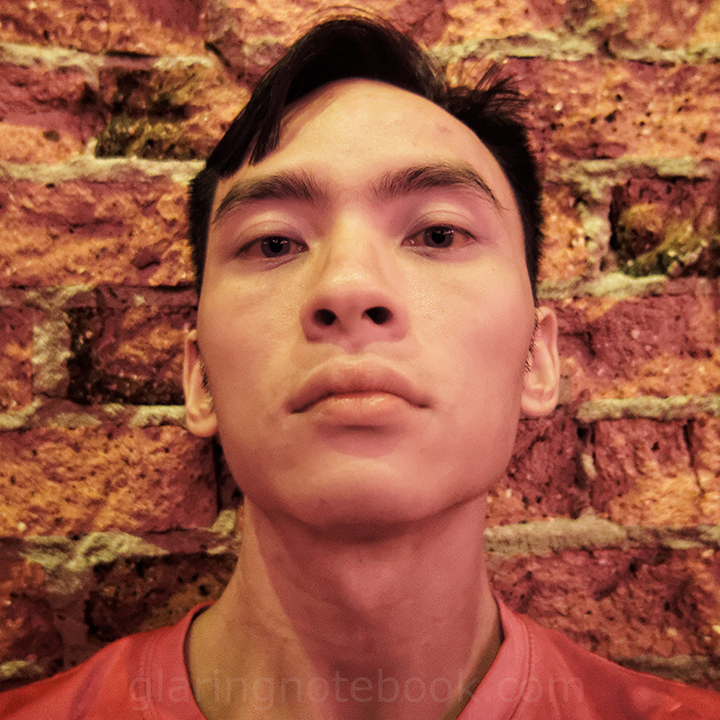
Now, with the Sony E 16mm F2.8 pancake.
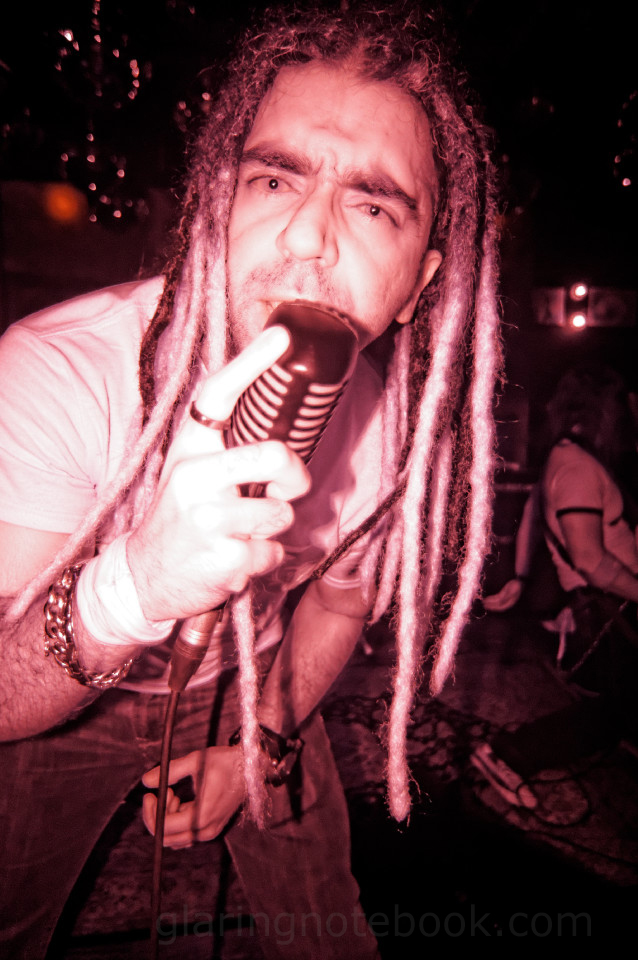
Again, with flash, and a Hoya R72 infrared filter. I’ve shot Adam of Dragon Red before in infrared on my infrared-modded manual-focus Fujifilm Digital Q1!
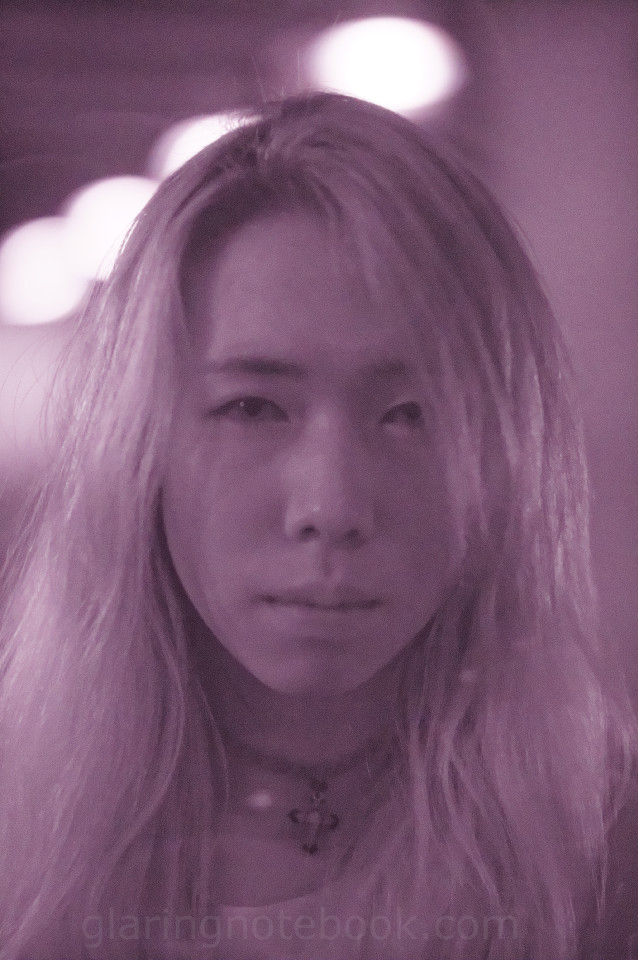
Jyo through the Mitakon/ZhongYi Speedmaster 50mm F0.95 through a 77mm infrared filter, handheld (as opposed to screwed-on, as I didn’t have the right step-up ring.)